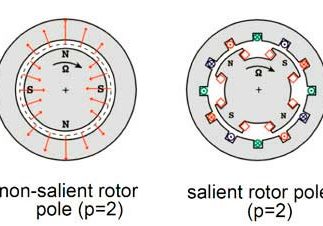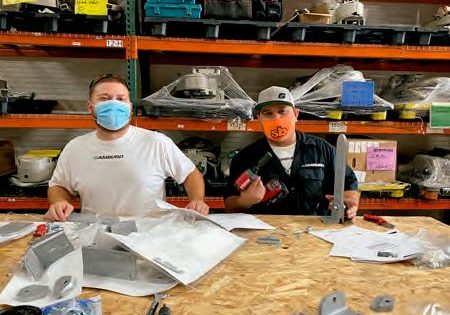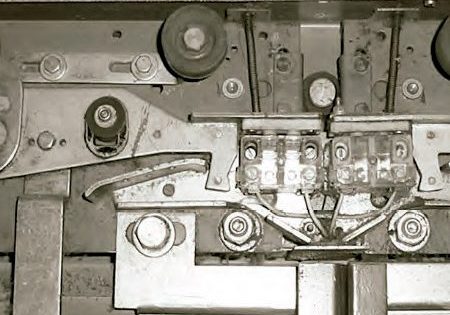Plug-and-play fault monitoring systems can make for fast detection of lift faults.
To adapt vertical-transportation systems to future demands, the lift industry has identified a need to move from today’s preventive and corrective maintenance strategies to predictive-maintenance strategies.[1] Therefore, the latest generation of high-end lift systems are often connected to the cloud, where control-system data are used to gather information about the lift systems’ health and potential faults. However, many lifts today are not equipped with control systems that support remote monitoring, and it is expected to take decades before they are all upgraded with them. Moreover, even if they do have control systems that support remote monitoring, the cost and time of connecting the lifts to the cloud and then merging the data from lifts of different makes and types into a single monitoring system are often extremely high and lengthy.
There is a need for plug-and-play sensor nodes and cloud-based monitoring services to which existing lift systems, independent of make and type, can be upgraded and connected for condition and fault monitoring. To meet these needs, SafeLine of Sweden developed the “smart” Internet of Things (IoT) sensor node LYRA and the cloud service ORION. Using built-in accelerometer and magnetometer sensors, LYRA can extract information about the lift’s position, speed and acceleration; vibration levels (according to the ISO 18738 standard) and vibration spectrums; and door motions and openings.[2-4] However, as the LYRA node is self-contained and not connected to the lift’s control system, it cannot determine if the absence of trips during a time period is due to the lift system not functioning properly or just because no calls for the car have been placed. Therefore, a new machine-learning-based method to determine if the lift system is operational or dysfunctional, given that no travels have been observed within a time window, has been developed.
Detecting Unusually Long Stationary Periods
The problem of determining if a lift system is operational, given that no travels have been observed within a time window, can be divided into two parts. Part one is to define a hypothesis test that, given a model for how the traffic load varies with time, determines if the absence of travels during a time period is caused by the lift system being dysfunctional. The second part is to, from historical travel data, learn a model for how the traffic load on the lift system varies with time.
The number of passengers traveling with a lift system is commonly modeled by a non-homogenous Poisson process.[5] That is, given that a travel occurred at time tn, the time to the next travel, ∆tn ≡ tn+1 – tn , has the following cumulative distribution function:
Pr (∆t_n (< x)=1-)e^(-Λ(t_n,т) (1)
Here, and denote the time-varying intensity function of the underlying Poisson process. Next, assume a time period, , has passed since the last trip was observed. Testing whether this is an indication that the system is dysfunctional can be done via the minimum risk hypothesis test:[6] , the lift is dysfunctional. Here, the threshold is given by:
![]() (2)
(2)
where , and denote the false alarm cost (cost of deciding that the lift is dysfunctional when it is functional); missed detection cost (cost of deciding that the lift is operational when it is dysfunctional); and prior fault probability, respectively. Note that the threshold may depend on time, as the costs and prior fault probability can vary with time. For example, service companies typically charge more for work outside office hours.
If the last trip happened at, the time until an alarm, ![]() (which indicates the lift system is dysfunctional) should be set is given by:
(which indicates the lift system is dysfunctional) should be set is given by:
![]()
To evaluate this expression, the intensity, of the Poisson process must be known. The next section discusses how this can be learned from historical traffic-load data.
Learning the Travel Patterns
As the traffic load typically exhibits a weekly cyclic pattern, the can be learned from historical data. To do so, a generalized linear model will be developed and fit to the data. First, is modeled using the radial base function expansion:
Here, is the ith model parameter (weight), and the radial base functions are given by
in which . Here, is a scale
parameter controlling the width of the base functions, and is the periodicity of the traffic-load pattern (typically a week). Furthermore, is the center location of the ith base function,
which is typically uniformly spread across the interval [0,Tp]. The parameters wi of the generalized linear model can be learned (estimated) from historical traffic-load data by dividing
[0,Tp] into K smaller time intervals of length, Ts (i.e., Ts = Tp/K). Let denote the number of trips that has occurred in the kth time interval of the jth week (i.e., the number of trips between during the jth week). Approximating as constant over each interval:
where . Next, given a sequence of traffic-load data collected over J weeks, the maximum likelihood estimate of model parameters can be calculated using standard regression tools, such as the “glmfit” function in Matlab.[7]
Example
To illustrate the application of the proposed error detection method, a few weeks of travel data were collected from a LYRA sensor node. The service log for the corresponding weeks was also obtained from the lift service company. The generalized linear model was then trained using the first three weeks of data. Thereafter, the method was used to detect time periods when the lift had been stationary for an unusually long time during the subsequent weeks.
Figure 1 shows that, around 7:45 a.m. on Tuesday, the service company is notified that the lift is faulty. The proposed method registered at 6:45 a.m. that the lift had already been stationary for an unusually long time. The lift then makes a single trip at around 7:30 a.m. and, once again, becomes stationary for an unusually long time. This event is also detected by the proposed method. Later, at 11:45 a.m. on Thursday, the service company is again notified that the lift is broken. This event had already been detected by the proposed method at 7:00 a.m. that day.
The exemplified scenario illustrates the capability of the proposed method to provide fast detection of lift faults. Furthermore, as the LYRA unit used to register the trips also keeps track of the current floor, it is able to tell that all faults have occurred at floor 2. This information is important in the fault diagnostics.
Summary and Conclusions
A new method for nonintrusive lift system fault detection has been presented. The method learns the typical traffic load on the lift and then detects if it becomes stationary for an unusually long time. In this way, potential faults in the system can be automatically detected and reported to the service company. The performance evaluation of the proposed method indicates that it can significantly reduce the time it takes until the service company gets notified about a fault.
References
[1] T. Ebeling and M. Haul. “Results of a field trial aiming at demonstrating the permanent detection of elevator wear using intelligent sensors,” Proceedings of Elevcon 2016, International Association of Elevator Engineers, p. 101–109.
[2] I. Skog, I. Karagiannis, et al. “A smart sensor node for the internet-of-elevators – non-invasive condition and fault monitoring,” IEEE Sensors Journal, Vol. 17, No. 16, p. 5198–5208 (August 2017).
[3] Z. Wen, Z. Fu, et al. “Non-invasive method for elevator’s movement monitoring based on MEMS sensor and Kalman filter,” 14th IEEE International Conference on Signal Processing, 2018, p. 797–802.
[5] R. Peters, L. Al-Sharif, et al. “A Systematic Methodology for the Generation of Lift Passengers under a Poisson Batch Arrival Process,” ELEVATOR WORLD, January 2016.
[6] S.M. Kay. Fundamentals of Statistical Signal Processing: Detection Theory, Prentice Hall, 1993. [7] J. Nelder and P. McCullagh. Generalized Linear Models, Chapman & Hall/CRC, 1983.
Get more of Elevator World. Sign up for our free e-newsletter.







